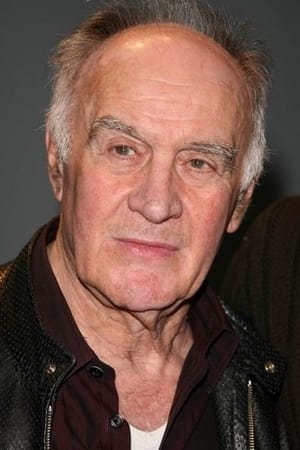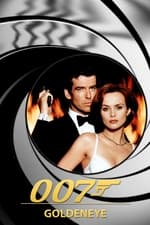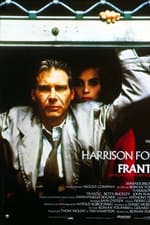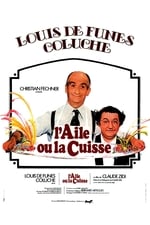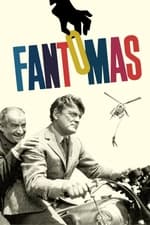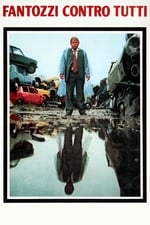Informations personnelles
Célèbre pour Équipe technique
Apparitions connues 67
Genre Homme
Date de naissance 17 avril 1930
Date de décès 21 janvier 2021 (90 ans)
Lieu de naissance Cepoy, Loiret, France
Alias
- Remi Julienne
- Remy Julienne
- Rémi Julienne
Score de contenu
100
Superbe ! Cette fiche semble complète !
Connectez-vous afin de
signaler un problème.
Biographie
Rémy Julienne (17 April 1930 – 21 January 2021) was a French driving stunt performer and coordinator, assistant director and occasional actor. He was also a rallycross champion and 1956 French motorcross champion.
Julienne was born in 1930, the son of café owners in the town of Cepoy, 110 km south-east of Paris. During World War II, he was dared by children evacuated from Paris to ride a bicycle across the local canal, which inspired him to start riding motocross.
In his early 20's Julienne became French motocross champion in 1957, which brought him to the attention of eminent stunt co-coordinator Gil Delamare. Through Delamare, Julienne's first screen appearance in 1964 was replacing actor Jean Marais, and in 1966 he played a German army motorcyclist in La Grande Vadrouille.
After Delamare's tragic death during a stunt in 1966, Julienne stepped-in and agreed to fulfill contracts Delamare had signed with various film studios. Julienne's scientific approach which created spectacular on-screen images garnered him admiration within the industry in an age before computer modelling. Working initially in French film and TV, and occasional Hollywood films shot in Europe, his developing reputation led to his employment on the British film The Italian Job. Producer Michael Deeley later commented that “During our initial meeting with Rémy, Peter Collinson [the film’s director] and I were delighted to discover that he was prepared to take the chase sequence even further than we had envisaged, suggesting a different range of hair-raising stunts that could be written into the script.” Julienne planned and co-ordinated all of the vehicle sequences, including the epic Mini chase sequence through the streets and roof tops of Turin.
"Very often people ask, ‘what was my favourite stunt?’ I’d say the jump between the two Fiat factory roofs must be the one, because it was emotional, because it was difficult. We worked on the ground, we prepared the ramps, calculated distances, speeds etc. [Originally] it was decided I had to do three separate jumps in each Mini. I explained that, as the roof was very wide, we could make the three Minis jump all together… it looked much better as a shot. It was more complicated, but really amazing."
He resultantly became Hollywood's go-to vehicle stunt coordinator, best publicly known for his stunts on six James Bond films, five of which were directed by John Glen. Julienne became known for Bond sequences which made ordinary cars do extraordinary things, such as the Citroen 2CV in For Your Eyes Only, the Renault 11 in A View to a Kill, and the petrol semi-tanker in Licence to Kill in which a Kenworth performed a wheelie. "The tanker chase was the most dangerous sequence I ever devised” said Glen, who also noted that Julienne was fastidious in his preparation. ...
Source: Article "Rémy Julienne" from Wikipedia in English, licensed under CC-BY-SA 3.0.
Rémy Julienne (17 April 1930 – 21 January 2021) was a French driving stunt performer and coordinator, assistant director and occasional actor. He was also a rallycross champion and 1956 French motorcross champion.
Julienne was born in 1930, the son of café owners in the town of Cepoy, 110 km south-east of Paris. During World War II, he was dared by children evacuated from Paris to ride a bicycle across the local canal, which inspired him to start riding motocross.
In his early 20's Julienne became French motocross champion in 1957, which brought him to the attention of eminent stunt co-coordinator Gil Delamare. Through Delamare, Julienne's first screen appearance in 1964 was replacing actor Jean Marais, and in 1966 he played a German army motorcyclist in La Grande Vadrouille.
After Delamare's tragic death during a stunt in 1966, Julienne stepped-in and agreed to fulfill contracts Delamare had signed with various film studios. Julienne's scientific approach which created spectacular on-screen images garnered him admiration within the industry in an age before computer modelling. Working initially in French film and TV, and occasional Hollywood films shot in Europe, his developing reputation led to his employment on the British film The Italian Job. Producer Michael Deeley later commented that “During our initial meeting with Rémy, Peter Collinson [the film’s director] and I were delighted to discover that he was prepared to take the chase sequence even further than we had envisaged, suggesting a different range of hair-raising stunts that could be written into the script.” Julienne planned and co-ordinated all of the vehicle sequences, including the epic Mini chase sequence through the streets and roof tops of Turin.
"Very often people ask, ‘what was my favourite stunt?’ I’d say the jump between the two Fiat factory roofs must be the one, because it was emotional, because it was difficult. We worked on the ground, we prepared the ramps, calculated distances, speeds etc. [Originally] it was decided I had to do three separate jumps in each Mini. I explained that, as the roof was very wide, we could make the three Minis jump all together… it looked much better as a shot. It was more complicated, but really amazing."
He resultantly became Hollywood's go-to vehicle stunt coordinator, best publicly known for his stunts on six James Bond films, five of which were directed by John Glen. Julienne became known for Bond sequences which made ordinary cars do extraordinary things, such as the Citroen 2CV in For Your Eyes Only, the Renault 11 in A View to a Kill, and the petrol semi-tanker in Licence to Kill in which a Kenworth performed a wheelie. "The tanker chase was the most dangerous sequence I ever devised” said Glen, who also noted that Julienne was fastidious in his preparation. ...
Source: Article "Rémy Julienne" from Wikipedia in English, licensed under CC-BY-SA 3.0.
Équipe technique
|
||||||||||||||||||
|
||||||||||||||||||
|
||||||||||||||||||
|
||||||||||||||||||
|
||||||||||||||||||
|
||||||||||||||||||
|
||||||||||||||||||
|
||||||||||||||||||
|
||||||||||||||||||
|
||||||||||||||||||
|
||||||||||||||||||
|
||||||||||||||||||
|
||||||||||||||||||
|
||||||||||||||||||
|
||||||||||||||||||
|
||||||||||||||||||
|
||||||||||||||||||
|
||||||||||||||||||
|
||||||||||||||||||
|
||||||||||||||||||
|
||||||||||||||||||
|
||||||||||||||||||
|
||||||||||||||||||
|
Interprétation
|
||||||
|
||||||
|
||||||
|
||||||
|
||||||
|
||||||
|
||||||
|
||||||
|
||||||
|
||||||
|
||||||
|
||||||
|
||||||
|
Réalisation
|
